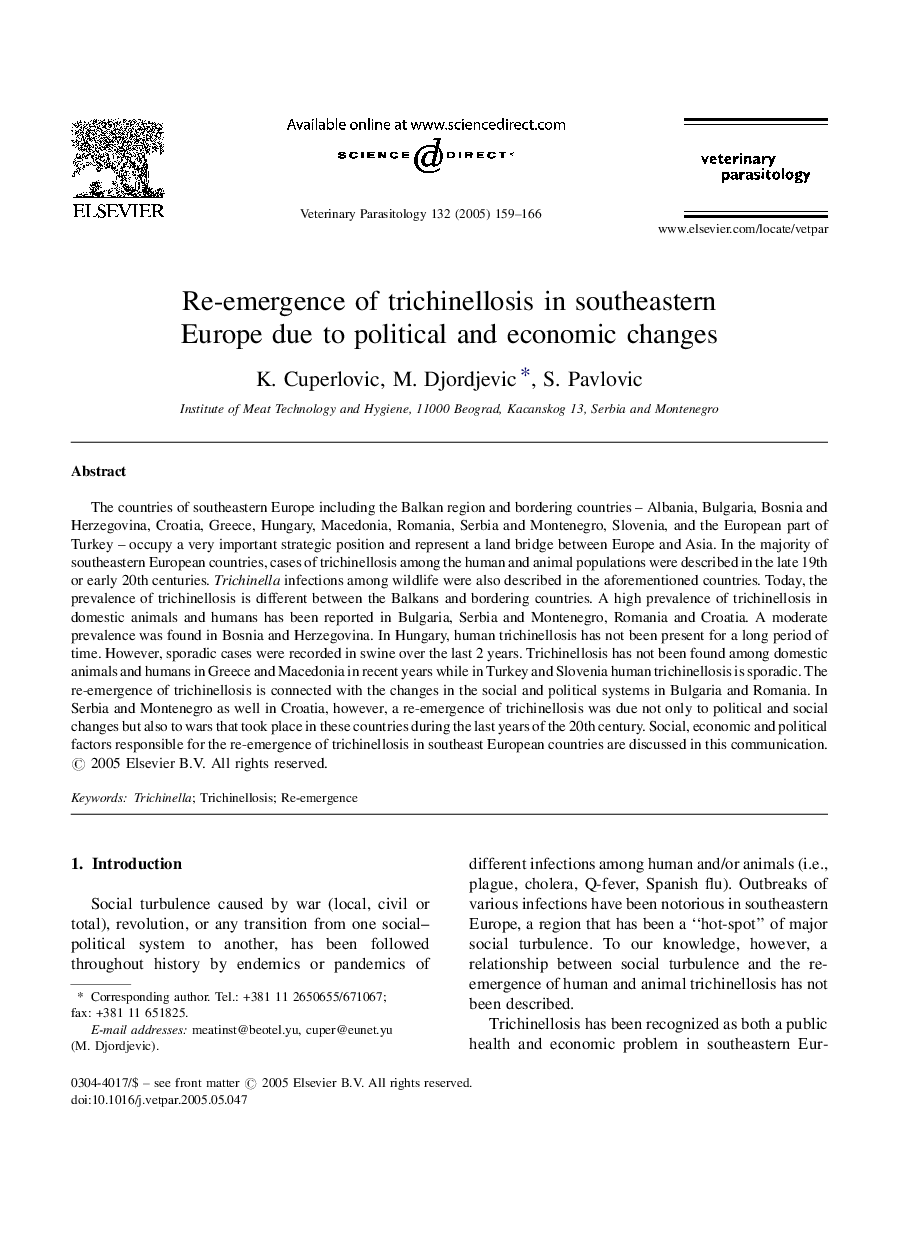| Article ID | Journal | Published Year | Pages | File Type |
|---|---|---|---|---|
| 8991037 | Veterinary Parasitology | 2005 | 8 Pages |
Abstract
The countries of southeastern Europe including the Balkan region and bordering countries - Albania, Bulgaria, Bosnia and Herzegovina, Croatia, Greece, Hungary, Macedonia, Romania, Serbia and Montenegro, Slovenia, and the European part of Turkey - occupy a very important strategic position and represent a land bridge between Europe and Asia. In the majority of southeastern European countries, cases of trichinellosis among the human and animal populations were described in the late 19th or early 20th centuries. Trichinella infections among wildlife were also described in the aforementioned countries. Today, the prevalence of trichinellosis is different between the Balkans and bordering countries. A high prevalence of trichinellosis in domestic animals and humans has been reported in Bulgaria, Serbia and Montenegro, Romania and Croatia. A moderate prevalence was found in Bosnia and Herzegovina. In Hungary, human trichinellosis has not been present for a long period of time. However, sporadic cases were recorded in swine over the last 2 years. Trichinellosis has not been found among domestic animals and humans in Greece and Macedonia in recent years while in Turkey and Slovenia human trichinellosis is sporadic. The re-emergence of trichinellosis is connected with the changes in the social and political systems in Bulgaria and Romania. In Serbia and Montenegro as well in Croatia, however, a re-emergence of trichinellosis was due not only to political and social changes but also to wars that took place in these countries during the last years of the 20th century. Social, economic and political factors responsible for the re-emergence of trichinellosis in southeast European countries are discussed in this communication.
Related Topics
Life Sciences
Agricultural and Biological Sciences
Animal Science and Zoology
Authors
K. Cuperlovic, M. Djordjevic, S. Pavlovic,
